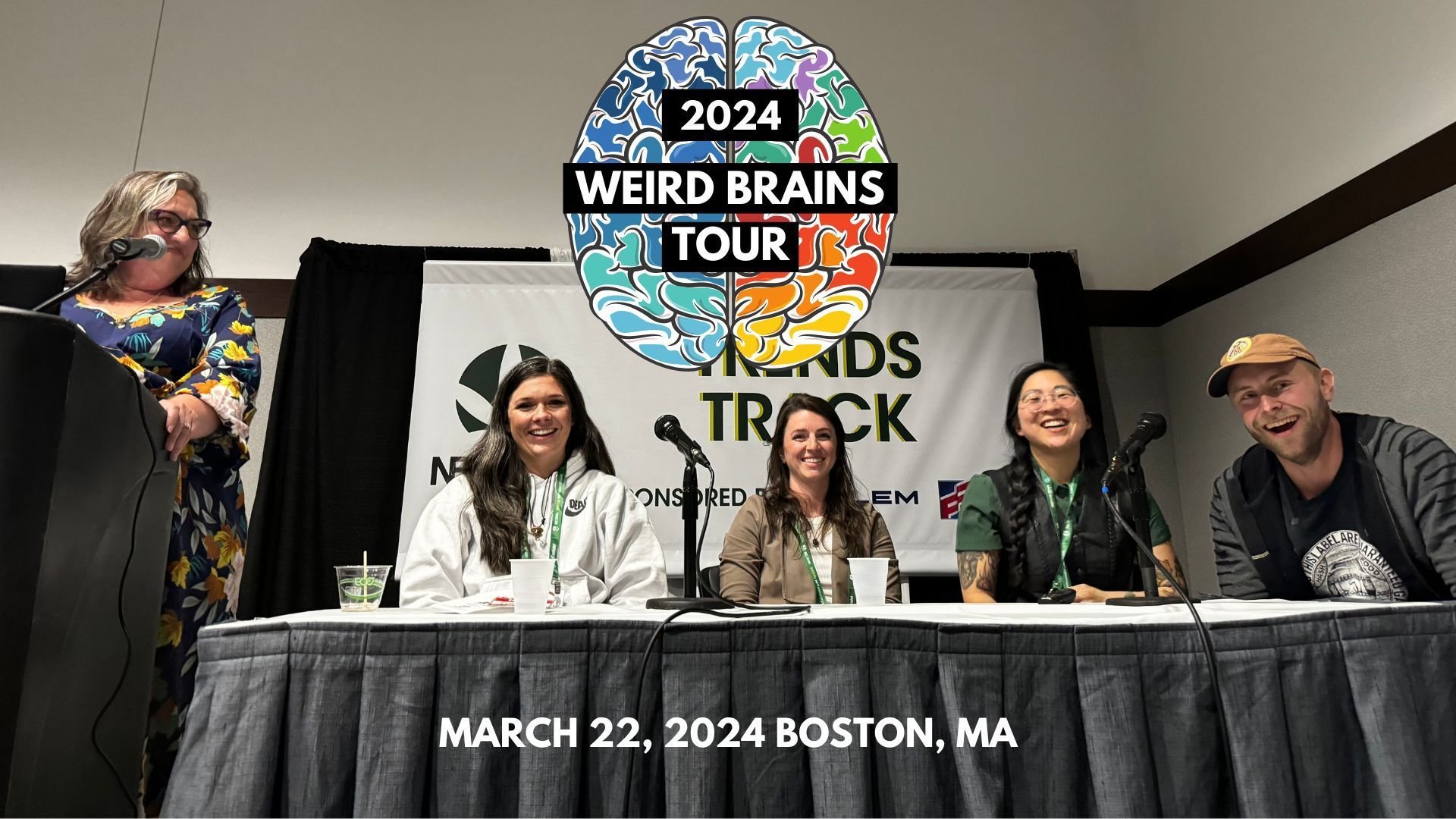What Does a Stoner Look Like? (NECANN Boston Community Data)
On March 23 and 24th, NAP was at NECANN Boston collecting data and launching the “Weird Brains” science advocacy panel tour. Research will play a critical role in destigmatizing cannabis and advocating for increased access. Involving the community in the data collection process opens the doors for research to remain tangible and relevant to the cannabis community.
Community data collection from NECANN Boston. Teal (<34 years old), yellow (35-55 years old), and orange (>55 years old) yarn answering questions on a white board with a cartoon sign of a joint sitting underneath that reads, “I SUPPORT CANNABIS RESEARCH.”
Last week we were at NECANN Boston at our very first booth and collected some interesting data from the local community! Click the link above to see all the data, but here are some insights we found interesting:
80% of respondents were part of the cannabis industry
over 50% of cannabis industry responders either grow or process their own cannabis products
69% of respondents were daily consumers
Of daily consumers, 66% were wake n' bakers (this is consistent with data from our early analysis of our longitudinal, real world evidence study)!
NECANN was also the very first stop on our 2024 Weird Brains Tour that focuses on science advocacy and community destigmatization of cannabis!
What’s the Weird Brains Tour?
Weird Brains is NAP’s science advocacy project in collaboration with Future4200. Our mission is to stand united to increase accessibility to cannabis by celebrating the diverse and “weird” brains in our community. We will be attending several industry conferences sharing our knowledge, collecting community data, and hosting discussions on the profound impact of cannabis as a community.
If you are interested in sponsoring the fall circuit of Weird Brains contact info@appliedpharmacognosy.org !


